Prior to yesterday’s iRacing Petit Le Mans, it had been six months since the last endurance race that I entered, eight months since the last one I drove in, and a year and a half since the last one that my longtime teammate Karl and I actually finished.
A crash at the hands of a wayward prototype ended our Sebring 12 Hours attempt in March within the first hour, while my own crash in the Daytona 24 Hours this January meant we were dead by daylight.
Add in an early crash in last summer’s Spa 24 Hours to make it three strikes, and it truly felt like we were out of touch with the survival skills that once made us such a dependable duo in endurance events.
With both of us taking a summer break from iRacing and the short Road Atlanta circuit promising to test — or taunt — our rusty racecraft, the Petit Le Mans event threatened to extend our streak of failure unless we changed something drastic.
So that’s exactly what we did. It didn’t necessarily happen on purpose, but as the week played out, we realized that we were taking a wildly different approach for this race than in those others that ended much too early.
Our preparations were informal, brief, and untechnical. And oddly, that didn’t seem like a bad thing. Taking a page from the Seinfeld sitcom scripts, “if every instinct you have is wrong, then the opposite would have to be right.”
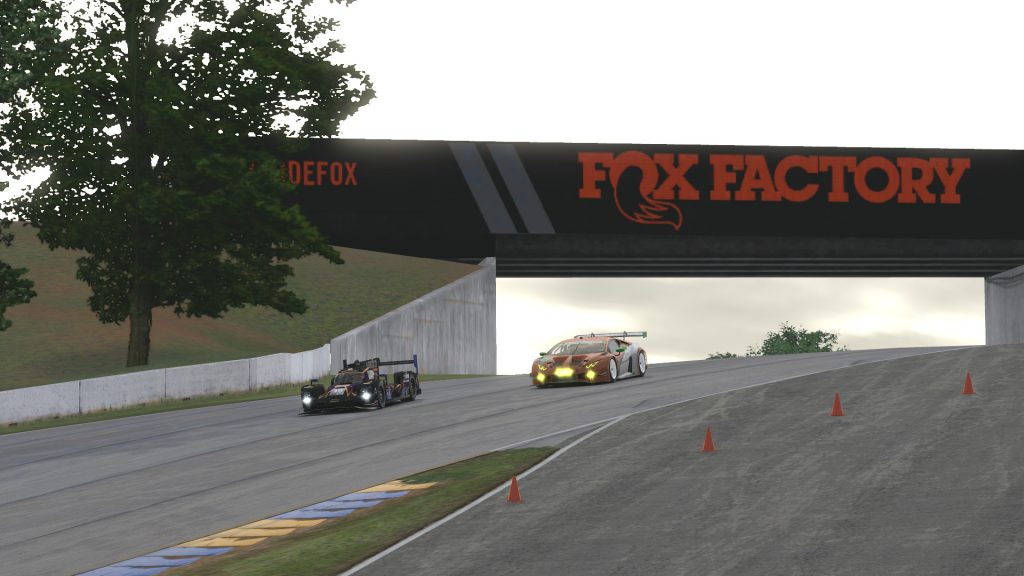
A Race Week Reversal
It started with practice — or a lack thereof. Unlike this year’s Daytona race, for which we started testing more than a month in advance, we ran our first Road Atlanta practice exactly six days before the race.
Since each of our work schedules made it tough to find time during the week, our joint practice was limited to a couple of hours each on Sunday, Monday, and Friday afternoons, and whatever warm-up we could manage on Saturday morning.
Of course, that left little time for setup tweaks, so we initially downloaded a race setup from Virtual Racing School and left it untouched all week. That’s also a sharp contrast from our typical approach, repeatedly tweaking the most minor setup components in search of any extra speed.
All that fine-tuning tends to inspire confidence, and entering the recent Spa and Daytona races, we truly expected to contend for the victory, or at least a strong result, only to be disappointed when we started deeper in the field and lacked the pace to match the top teams.
With time not exactly on our sides, we also took the complete opposite approach to setting expectations for Petit Le Mans. This time, we figured that just finishing would be a success.
Our recent races also left us frustrated by an inability to craft the correct strategy. Whenever we assumed tire wear would be too harsh to double-stint, half the field would use that strategy and force us to either adapt or absorb a time loss to take fresh tires every other pit stop.
Those failed strategies and early exits were particularly embarrassing because of the hard work I put into crafting detailed spreadsheets for each race outlining a planned driving schedule with the projected pace and fuel usage throughout the race.
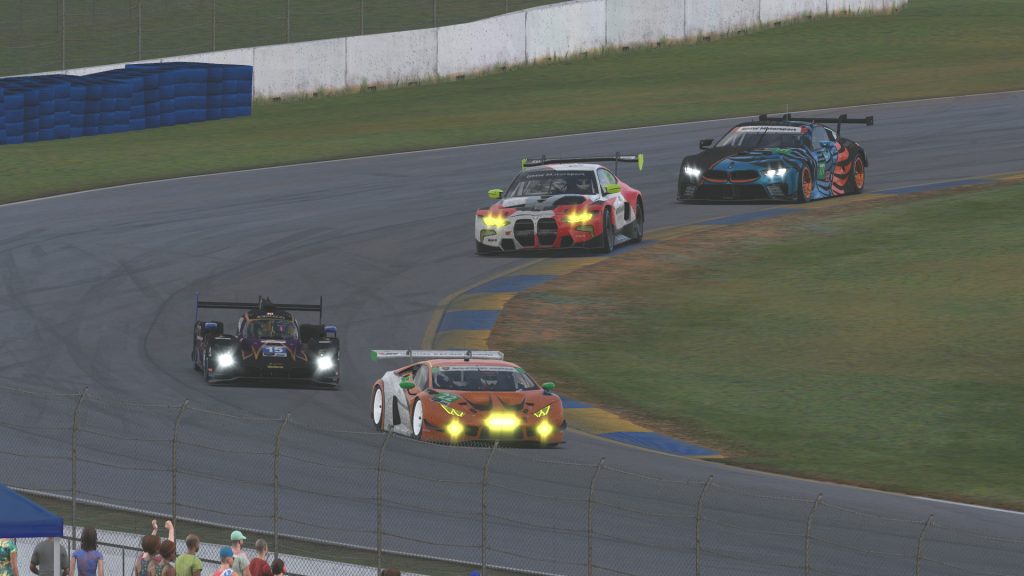
So for this race, we kept it simple. With a bit of fuel saving, we could stretch our stints to about an hour each, and we’d run five double stints to cover the ten-hour length. Our most exotic adjustment was doing a driver swap after Karl’s opening stint, just so we’d each have the same amount of driving time.
With that plan, there was no need, nor want, for some advanced spreadsheet, which had begun to carry a curse for our races. Earlier this year as our struggles were still growing, Karl and I had joked that creating a new spreadsheet was the first true sign of doom for an endurance race.
I even avoided creating a custom paint scheme for us, mostly due to time limits but also because crashing a sharp-looking car race after race made me wonder if the hours spent designing a livery would have been better used by squeezing in some additional practice.
And a final decision that truly exemplified the “do the complete opposite” approach was perhaps the most important any team makes for a race like this: what to drive. Among the GT3 class, the BMW and Porsche clearly seemed like the top choices, leaving the little-loved Lamborghini Huracán mostly on the sidelines.
But after my season-opening IMSA win at Homestead and with Karl’s own affinity for the Lambo, we decided to go with the least-popular option for the fun factor alone and accept whatever competitive disadvantage it carried, sticking with our casual approach to this race.
The qualifying session offered the first signs that despite our choice of car and lack of preparations, we were better off than we expected. Karl’s clutch second lap landed us ninth — dead center in the seventeen-car GT3 field in our split, the fifth of 20 for our timeslot. With the race’s other Lambo starting just behind us, it seemed that our expectations for being off-pace could have been incorrect.
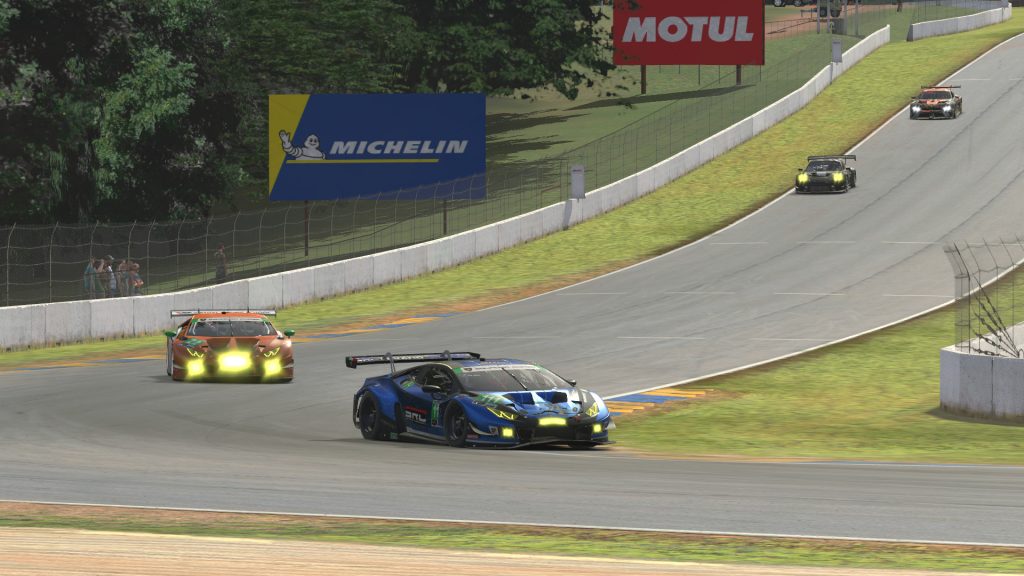
All According to Plan
As the race began, it also seemed to take the opposite progression from our usual fate.
The opening stint promised to be our first hurdle, as it’s when our most recent Spa and Sebring races ended before I ever even had the opportunity to get behind the wheel. But my trust in Karl’s abilities in heavy traffic, at least more than my own, has never wavered, and he guided us through the first hour while protecting our position, and more importantly, our car.
Sticking with our strategy, I took over at the pit stop, inheriting his slightly used tires and our undamaged car. At this point in a race, we often find ourselves scrapping for positions and slowly crawling up the running order. But this time, a combination of our double-stinting strategy and attrition throughout the field seemed to suddenly vault us inside the top five during the second hour.
In fact, in my opening stint, I only passed one car on track — a BMW that was a bit too hard on its tires — but we were still up to third place by the end, unexpectedly in podium contention with a car and a pace that we assumed would be confined to the rear of the field.
As the race played out, we were also shocked not only that our strategy was working, but that other teams hadn’t used the same simple approach. Some changed tires at every pit stop, losing nearly 30 seconds while we double-stinted. Others cut their stints short, forcing them to add an extra pit stop later in the race.
Regardless of strategies, at some point in every race, I inevitably end up locked in battle with another team or driver of similar pace. In last year’s Sebring race, for instance, I seemed to have a magnetic attraction to another Mercedes team, and we spent the better part of six hours chasing each other and fighting for position.
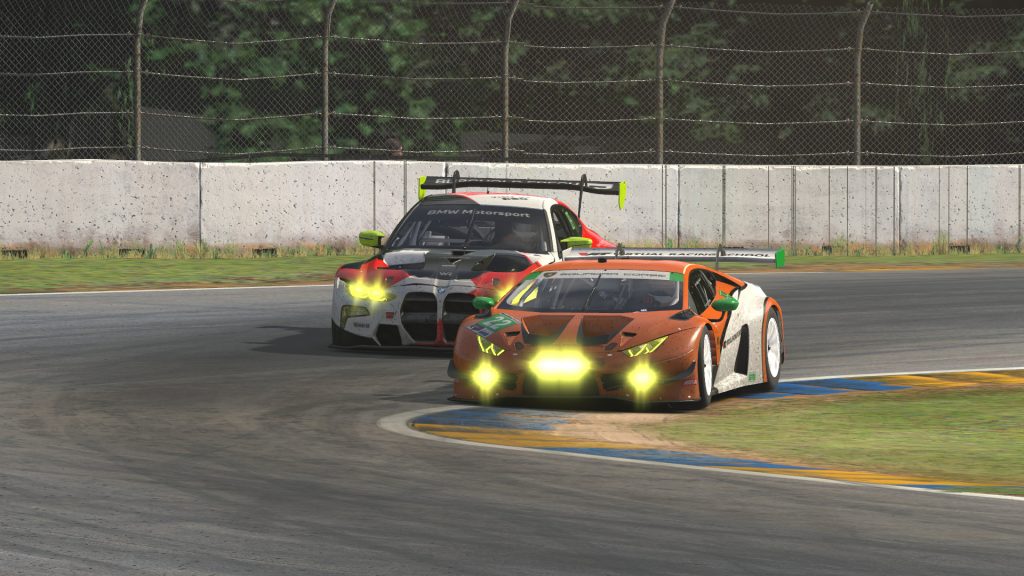
This time, though, the gaps opened all around us, and we rarely saw another GT3 car for the rest of the race. The two early leaders had exceptional pace and pulled away, while Karl and I found unexpected consistency and rediscovered our time-tested skills in managing traffic to slowly drive away from the cars behind us.
Many of our races have at least one dramatic moment, like a brush with destruction that leaves us damaged or displeased. But this race was mostly drama-free. During my first double stint, a prototype drove me off the road entering the esses, and Karl had a later spin after bouncing off a kerb at turn five, but neither incident was particularly damaging or time-consuming.
As a result of our steady driving, along with a slower driver on the erstwhile second-place team who also accrued at least two drive-through penalties for exceeding track limits, we found ourselves in second place by the midway point.
The challenges that we usually expect around us never came, as we held a 40+ second gap to our next-closest competitor through the final hours. A rendezvous with the tire wall, à la Daytona, never happened as nighttime fell on the track. And we saw the checkered flag in an endurance race for the first time in 18 months, securing a solid second-place finish in our return to the podium.
Karl and I agreed that it was our best endurance result in at least two years, since an unexpected third-place result in the Bathurst 1000 back in September 2019. We also entered that race with lowered expectations amid a field of drivers more familiar with the car than us, so perhaps the pressure we apply to ourselves is the ultimate jinx in an endurance event.
Both races had something else in common as well, though. In terms of pace, our team had no weak link or clearly slower driver in either race. And in that respect, yesterday’s Petit Le Mans affirms a change in how I perceive my own driving, which may be my biggest takeaway from the weekend.
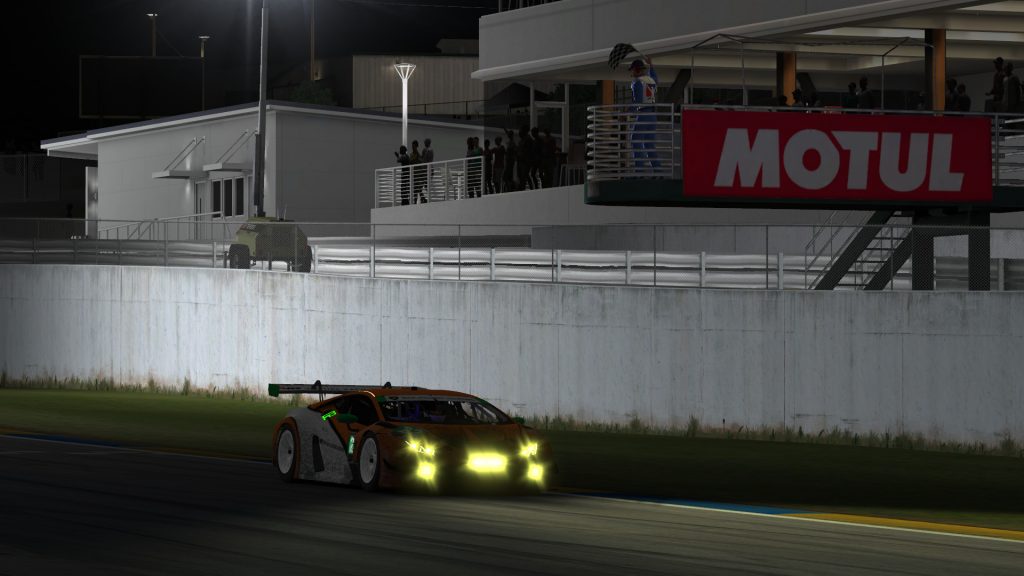
The Search for Speed
For many years, I naturally compared myself against Karl, and our light-hearted observation that he was always a half-second quicker than me began to feel less like an overcomeable deficit and more like my inescapable destiny. Continually unable to match my teammate, I felt like a drag on our team’s performance, even if Karl would never admit as much.
Throughout our practice for this race, Karl may have still had an advantage, but it was much smaller, measured in hundredths or even thousandths of a second. We were close enough to be considered even, although I still had something to prove under race conditions.
While the changing time of day, track temperature, and traffic can make it tough to compare drivers’ pace in a long race like this, the iRacing results simplify it into one statistic: the fastest (clean) lap.
In Karl’s second stint on fresh tires and low fuel, he managed a quick lap of a 1:19.461 that stood as our team’s fastest time for most of the race.
As night fell over the virtual track and I was the last driver in the car, I knew I’d have a chance to eclipse that lap time, but it wouldn’t be easy.
First, I’d have to burn through most of the fuel weight so I wasn’t losing time down the long backstretch. And over a limited stretch of laps late in that run, I’d need the cars around me to cooperate, along with my own driving to be aggressive enough to be fast but not careless enough to ruin our race in the closing hours.
Eventually, I had an opportunity. Two prototypes passed me at the beginning of the straightaway, and with their draft, I was on a flying lap. But an over-eager entry to the final chicane yielded a plume of dust into the air, an off-track incident, and invalidated that otherwise fast lap of a 1:19.291 from being our team best.
With the stint winding down, I conceded defeat to Karl in our good-natured fast lap rivalry, but I’d soon be given a second chance. The GT3 class leader exited the pits just in front of me, albeit a lap ahead in the standings. While their overall pace was much stronger than mine, on low fuel, I could barely keep up with them.
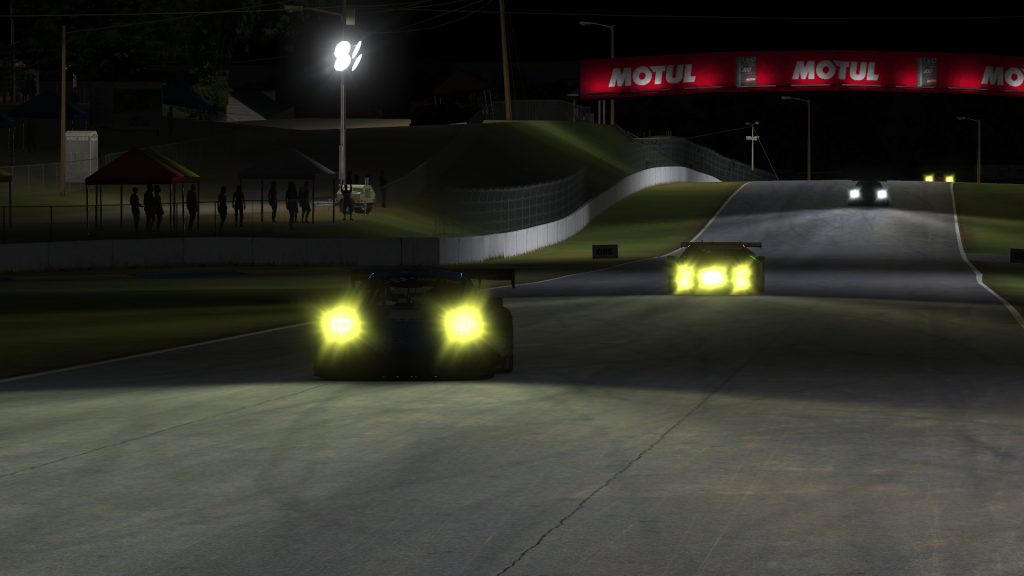
With just five laps remaining in my first stint, I nailed the start of the lap and lined up in the leader’s slipstream down the backstretch. This time, I took a slightly more conservative approach to the chicane but still finished with a 1:19.305, which was good enough to set a personal and team lap record for the race.
I’m certainly not prideful enough to suggest that one lap means I’m now the faster driver on our team. Quite the opposite, I’m always learning speed secrets from Karl’s driving lines and telemetry whenever we prepare for a race, even as haphazardly as this one.
Data crunched by Torque Freak Racing shows that by all major metrics — median lap time, best 20 lap times, and top 50% lap times — Karl still had a slight edge in this race. But that gap was close, at no more than four hundredths of a second for any statistic. And we were both among the top half of the GT3 field in our split for all categories.
In races like this, I no longer feel like a liability to our team, and that makes our pairing even stronger — effectively a one-two punch that punishes the weaknesses among our competitors with relentless consistency, no matter which one of us is driving.
Perhaps that’s one of the biggest reasons why this race was so anticlimactic en route to a straightforward second-place finish. Despite our recent frustrations and time away from sim racing, Karl and I are still experienced enough to know how to drive and manage an endurance race.
When I add in a bit of confidence — but not overconfidence — in my driving, remove the pressure to achieve a specific result, and stop micromanaging strategies while executing a simple race plan, it’s easy to see why the opposite approach may be the optimal approach.
With our string of bad luck now behind us and a newfound way to get ready for endurance races tested and approved, the dependable duo may be even stronger in all aspects.
And we don’t need some spreadsheet to tell us that.